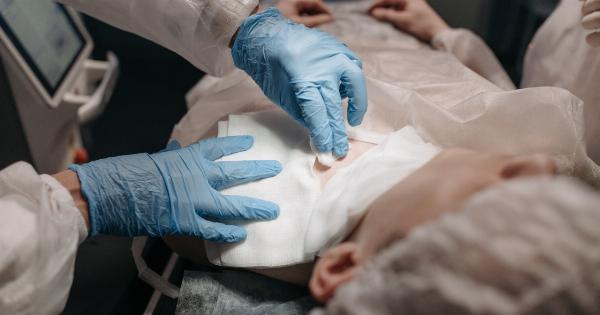Cervical syndrome is a debilitating condition that affects the neck and spine. It can cause pain, numbness, and tingling in the hands and arms, difficulty in gripping and lifting objects, and weakness in the arms.
Cervical syndrome usually develops due to age-related wear and tear, herniated discs, or injury in the cervical spine. While non-surgical treatments such as physiotherapy, massage, and medication can help alleviate the symptoms, surgery may be inevitable for some patients. This article discusses the causes, symptoms, and surgical treatments for cervical syndrome.
Causes of Cervical Syndrome
Cervical syndrome can develop due to various factors, including:.
- Age-related wear and tear on the cervical spine
- Herniated cervical disc
- Cervical spinal stenosis
- Cervical spondylosis
- Neck injuries due to trauma or accidents
The cervical spine is made up of seven vertebrae, which are cushioned by discs that act as shock absorbers. As a person ages, the discs may start to wear out, dry up, and become less flexible, leading to degenerative changes in the spine.
The discs may also bulge or rupture, compressing the spinal cord or nerves, causing pain and weakness in the upper and lower extremities.
Spondylosis refers to the degeneration and breakdown of the cervical spine joints, which can lead to the growth of bone spurs or overgrowth of ligaments, causing spinal stenosis.
Spinal stenosis is the narrowing of the spinal canal, which can compress the spinal cord and nerves, leading to cervical syndrome.
Symptoms of Cervical Syndrome
The symptoms of cervical syndrome vary depending on the cause and severity of the condition. However, the common symptoms include:.
- Pain in the neck that may radiate to the shoulder, upper back, and arm
- Numbness or tingling in the hands and fingers
- Weakness in the arms, difficulty in gripping and lifting objects
- Headaches and dizziness
- Difficulty in walking or maintaining balance
- Loss of bladder or bowel control in severe cases.
It is important to seek medical attention if you experience any of these symptoms, especially if they persist or worsen over time.
Non-surgical Treatments for Cervical Syndrome
The first line of treatment for cervical syndrome is usually non-surgical. These may include:.
- Physical therapy and exercise to strengthen the neck and upper extremities, improve posture, and increase range of motion
- Massage therapy and chiropractic adjustments to relieve tension and stiffness in the neck and spine
- Acupuncture and other alternative therapies to alleviate pain and promote relaxation
- Medications such as non-steroidal anti-inflammatory drugs (NSAIDs), muscle relaxants, and pain relievers to reduce inflammation and relieve pain.
Non-surgical treatments can be effective in managing mild to moderate cases of cervical syndrome. However, they may not be effective in relieving severe or chronic symptoms, and surgery may be necessary to restore normal function and relieve pain.
Surgical Options for Cervical Syndrome
Surgery for cervical syndrome involves decompressing the spinal cord or nerves by removing the damaged or degenerated discs or bone spurs that are causing the compression. There are several surgical options available for cervical syndrome, including:.
Cervical Laminectomy
Cervical laminectomy is a surgical procedure that involves removing the lamina, the bony arch that covers the spinal canal, to create more space for the spinal cord and nerves.
The procedure may also involve removing the damaged discs or bone spurs, or fusing the vertebrae together to prevent spinal instability. Cervical laminectomy may be recommended if non-surgical treatments have failed, and the patient experiences severe or progressive symptoms.
Cervical Discectomy and Fusion
Cervical discectomy and fusion is a surgical procedure that involves removing the damaged or degenerated cervical disc and replacing it with a bone graft or artificial disc.
The procedure aims to restore normal spinal alignment and prevent future degeneration. Cervical discectomy and fusion is recommended for patients with single-level disc herniation or degeneration who have failed non-surgical treatments.
Cervical Disc Replacement
Cervical disc replacement is a surgical procedure that involves replacing the damaged or degenerated cervical disc with an artificial disc. The procedure aims to restore normal spinal mobility and prevent adjacent level degeneration.
Cervical disc replacement may be recommended for patients with single or multiple-level disc degeneration who have failed non-surgical treatments.
Recovery and Rehabilitation after Surgery
Recovery and rehabilitation after surgery will depend on the type and extent of surgery performed.
However, most patients will need to stay in the hospital for a few days and may require pain management and physiotherapy to improve mobility and strength. Patients may need to wear a cervical collar for a few weeks or months to support the neck and promote healing. Recovery time may vary, but most patients can resume normal activities within six weeks to three months after surgery.
Potential Risks and Complications
As with any surgical procedure, cervical surgery may involve certain risks and complications. These may include:.
- Infection
- Bleeding
- Nerve damage
- Instrumentation failure
- Spinal instability
- Continued or worsening symptoms
- Allergic reaction to anesthesia or artificial disc material.
Patients should discuss the potential risks and benefits of surgery with their surgeon and follow their post-operative instructions carefully to minimize the risk of complications.
Conclusion
Cervical syndrome can be a debilitating condition that affects the neck and spine. While non-surgical treatments may be effective in managing mild to moderate cases, surgery may be inevitable for some patients with severe or progressive symptoms.
There are several surgical options available, including cervical laminectomy, cervical discectomy and fusion, and cervical disc replacement. Patients should discuss the potential risks and benefits of surgery with their surgeon and follow their post-operative instructions carefully to ensure a smooth recovery.




























